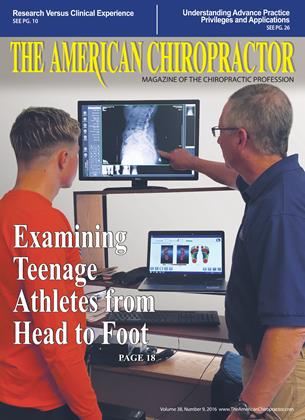Lay a Solid Foundation for Documentation of Modalities and Procedures
DOCUMENTATION
By Kathy Mills Chang, MCS-P, CCPC
If your practice is typical, you probably provide modalities and procedures to your patients along with chiropractic adjustments. When included with a formal treatment plan, they provide enhanced healing and a speedy recovery. Most third-party payers provide benefits for these additional services and, therefore, expect proper documentation from the initial visit through the routine office visits to prove medical necessity. In some cases, benefits have changed to “bundle” all of the services provided during a typical visit into one global fee. Either way, it is required that you document the necessity of each service you provide.
For excellent documentation, begin with the end in mind. This simple rule of thumb will help to “walk through” the thought process that a doctor should follow during an initial evaluation. When recommending physical medicine procedures as paid of the treatment plan, even more meticulous detail is important. It’s vital to establish medical necessity for the modalities and/or therapeutic procedures that will affect the functional improvement for the patient. Follow along with each key element of the initial evaluation and note the extra attention necessary when prescribing modalities and procedures.
History
When patients fill out initial paperwork on the first visit, they ai e providing the basis of the history portion of the initial visit. Often, this information is not complete enough. Providers must complete the consultation by digging deeper into the review of systems (ROS); the past, family, and social history (PFSH); and the outcomes tools to get the true picture of the mechanism of injury or the origin of the complaints. In doing so, these additional questions attempt to address all conditions or comorbidity factors that aie present. Thinking of the protocols established by the provider, what types of treatment will most effectively address tlie concerns? Stiffness, soreness, and achy muscles may respond to soft tissue work, electric muscle stimulation, or ultrasound. Begin to formulate your plan now.
Exam
This portion of the process must be driven by the history, and it should include any testing or measurements necessary to quantify the details provided in the history. Document any physical signs of instability, weakness, muscle tonicity changes, spasm, and other appropriate findings. As we think about necessity for modalities or procedures, consider what type of treatment you
■ ^ Where much is given, much is required. ï Ï
offer in the practice that would help the patient return to a stable status. For example, if a patient presents with weak core muscles causing spinal instability and postural distortion, therapeutic exercises to strengthen the core aie indicated and would likely result in a decrease in compensatory patterns caused by the imbalance of the musculature. This, by definition, is medical necessity. Document it!
As with all treatment rendered within an active episode of care, modalities and procedures prescribed must be linked to the diagnosis necessitating the treatment. Be aware of which codes support medical necessity for which treatment. Third-party payers may provide this information within their medical review policy, if not for chiropractic, perhaps for physical therapy. Remember, a diagnosis of a segmental dysfunction (subluxation) may not warrant an extended need for physical medicine, but a more specific diagnosis, by region or muscle group, goes a long way toward establishing medical necessity for care. For example, if the patient presented with piriformis syndrome (G57.01 or G57.02), therapeutic exercise may be indicated.
Treatment Plan
If a passive therapy is to be provided, you must document the clinical rationale for that therapy, where the therapy is to be applied, and the expected time component. If active procedures
aie prescribed, you must document the clinical rationale for the service, list the intended services (i.e., the exercises), set goals for these procedures, and include an expected time component. The treatment plan should be sufficient to determine medical necessity, when it includes diagnosis, along with onset or exacerbation of the diagnosis; a reasonable estimate of when the goals will be reached; long-term and short-term goals that are specific, quantitative, and objective; frequency and duration of treatment; and the specific treatment techniques and/or exercises to be used in treatment.
Where much is given, much is required. The same applies to services provided in your office and paid by a third-party payer. Document the necessity of the service, lay a firm foundation for the recommendations, and feel confident that your patient has received the best possible treatment that has been documented to perfection.
H Kathy Mills Chang is a certified medical compliance
specialist (MCS-P) and certified chiropractic professional coder (CCPC). Since 1983, she has provided chiropractors with reimbursement and compliance training, advice, and tools to improve the financial :e of their practices. Kathy leads a team of 21 at KMC University, and is blown as one of our profession ’sforemost experts on documentation, Medicare, and billing. She or any of her team members can be reached at 855-832-6562 or info(cfiKMC University, com.
 View Full Issue
View Full Issue






